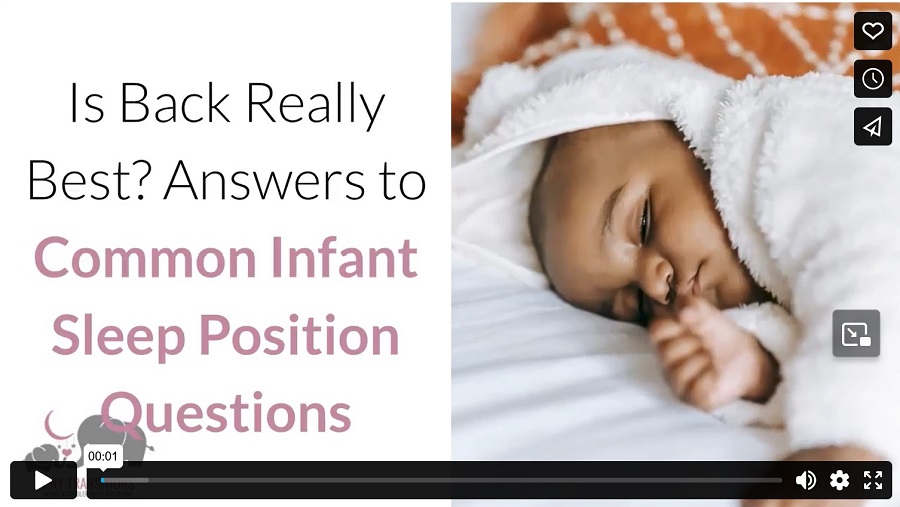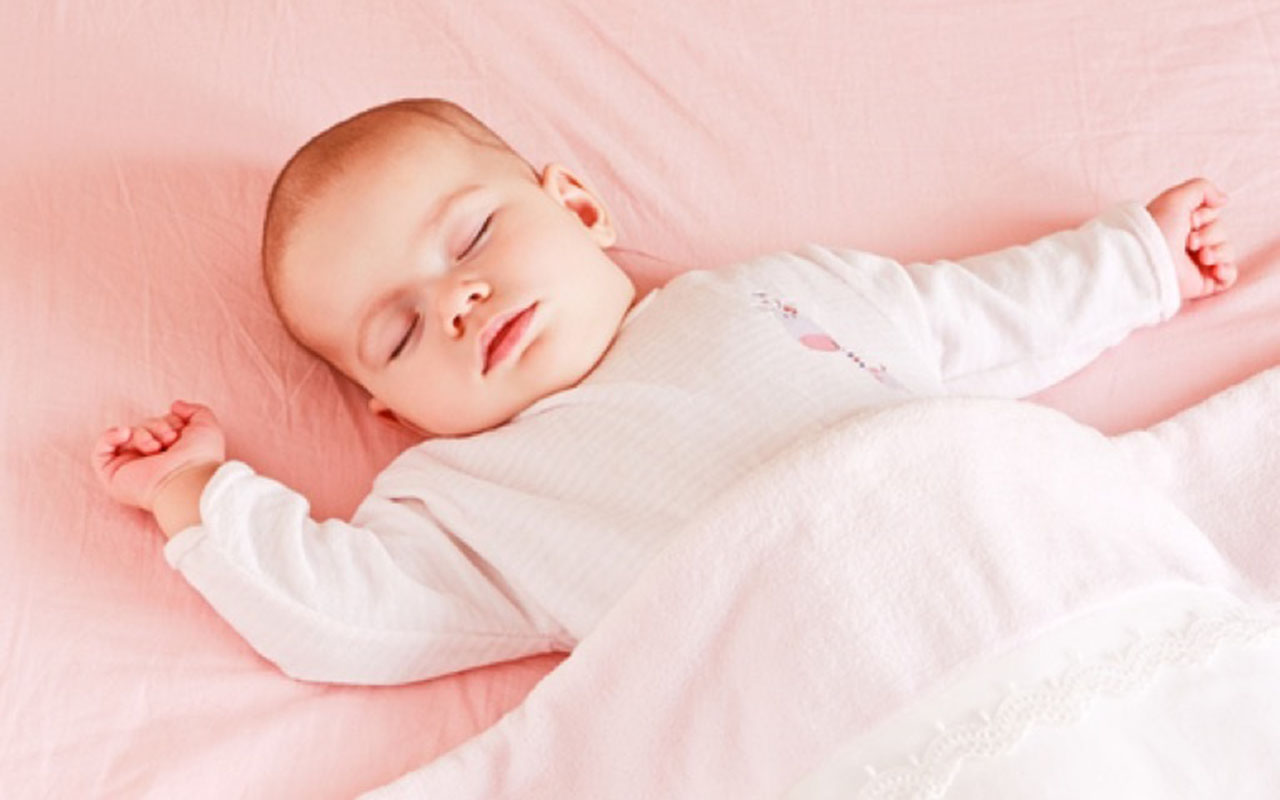The psychology behind adult sleeping positions has taken the internet by storm recently – probably because people eat up anything that reveals why they are the way they are. Sleep in the fetal position? You’re sensitive. Side-sleeper? You’re open-minded. Prefer your stomach? You’re energetic and adventurous.
The studies that gathered sleep data and organized it to show personality patterns are small scale and not easily replicated – two things that should make you take the findings with a grain of salt. But there is a bit of science behind sleep positions and health in adults. Sleeping of your side, for instance, can help alleviate snoring and digestive problems, and if you’re pregnant, it can be better for both you and the baby.
So what about after your baby is born? Some babies exhibit sleep position preferences very early on, but you should follow some firm guidelines regardless of their preferences. The most important of these: Back is Best.
Back is Best
If you’re older than 30, you probably remember a time when babies went to sleep on their tummies. Your own parents might have even given you advice that “back in my day, we always put babies to sleep on their stomachs – and they never complained, not even once!”
It is probably true that your parents put you or your siblings to sleep on your stomachs, but starting in the early 1990s, pediatric sleep experts determined that putting babies to sleep on their backs was the safest sleep position. The campaign “Back is Best” (now called “Safe to Sleep”) started off by saying that babies needed to go to sleep on their backs or sides instead of on their tummies. That advice was eventually changed to back only, as side sleeping sometimes causes babies to roll onto their stomachs.
Why is stomach-sleeping bad?
That isn’t an easy question to answer, but the evidence supporting it is certainly noteworthy. Scientists found that babies that went to sleep on their stomachs doubled their risk of dying of SIDS, and since the Safe to Sleep campaign started, yearly SIDS deaths have been cut in half.
Scientists aren’t exactly sure why stomach-sleeping is so bad, other than the evidence showing it is. It could be that the babies fall asleep too deeply when they’re on their stomach, so they can’t wake up enough to breathe well. It could also be that the baby’s airways are obstructed by that particular sleep position or that the baby gets too warm. Whatever the reason behind it, the conclusion is clear: babies always need to be put to sleep on their backs.
What if my baby rolls onto her stomach?
It’s always a little startling that first time you peek on your baby to find that she has rolled onto her tummy. The mantra “Back is Best” is pounded into new parents before the baby even arrives, so seeing your baby on her belly can make you feel a little nervous. Just take a deep breath, and know that it’s ok.
Once babies can successfully roll on and off their tummies, the sleep hazard lessens. Perhaps it’s because they have the skills and physical coordination to sense that they need to change sleep positions, or maybe their bodies are just more mature. Whatever the reason, when your baby can roll over in her sleep, you don’t need to roll her back.
That said, you should always, always, always put your baby on her back when she first goes to sleep until she is at least one year old. As she gets older, she may immediately flip onto her tummy, booty up in the air, but as long as she did that on her own, she should be good to go. Just be sure that you keep her bed free of all blankets, stuffed animals, and wedges or pillows because those things could cause a suffocation hazard.
What about plagiocephaly?
Plagiocephaly is a (slightly scary-sounding) buzzword in the parenting world that you might hear connected to Back is Best/Safe to Sleep. Plagiocephaly is when a baby’s skull starts getting slightly flattened in specific spots instead of being nice and round. The incidences of plagiocephaly have increased since the Back is Best campaign started, possibly due to more people placing their babies to sleep on their backs instead of their stomachs.
In the vast majority of cases, plagiocephaly corrects itself once the baby starts rolling over and becoming more physically coordinated. Lots of tummy time helps prevent plagiocephaly, but if you are concerned, your baby’s doctor might recommend physical therapy exercises to help curb the condition. It is rare that additional medical intervention (such as an infant head-shaping helmet) is needed, and back sleeping is still the best position for your baby.
While your preferred sleep position may (or may not) accurately describe your personality, all babies under the age of one should go to sleep on their backs. If your infant won’t sleep on her back, contact one of our pediatric sleep trainers today to help train your infant to sleep through the night.
Video



